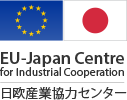

Tohoku
Products that occupy the top positions for exports include pharmaceuticals, rubber products, motors, etc. For imports, products such as metal ore and scraps, coal, crude oil, and raw oil are in the top positions. Furthermore, pertaining to manufacturing activities, Tohoku is a home to 770 manufacturing company headquarters.
Tohoku’s service industry is also currently on the rise, making 2021 the seventh consecutive year of increase. Tohoku region has a large share of medical, healthcare and welfare employees, followed by accommodation, eating and drinking services.
Tohoku is a host to a number of impactful research institutions and science-tech hubs. The local government-industry-academia collaboration is an approach that is commonly found within the region to tackle environmental and other challenges, as well to promote new scientific innovations.
In regard to internationalization, foreign residents have increased as much as 3.8% in the Tohoku region, with Miyagi hosting the largest number of foreign residents, followed by Fukushima. Additionally, the Tohoku region (in all its 6 prefectures) experienced a total increase as much as 3.5% pertaining to entry business rates compared to the previous year.
Prefectures:
Long-established industries: agriculture, forestry and fisheries, retail trade (food and beverages), manufacturing industries (nonferrous metals, foodstuffs, steel, pulp/paper, and electronic components), tourism-related industries. Growing industries: promotion of low-carbon industries, green date centres, hybrid automobile components, wind farms. According to the final product value, the composition of industry in Aomori prefecture in 2020 is made up of food-related products, followed by non-ferrous metals, and electronic components in the top ranking.
Long-established industries: food and beverages, agricultural and marine products, automotive industries, transportation machinery, electronic parts and devices, semiconductors, ICT, pharmaceutical industries. Emerging industries: renewable and clean energy industries. According to the final product value, the composition of industry was principally composed of transport machinery, food and related products, machinery & equipment.
Long-established industries: automobile industry, high-tech electronics, ICT, aerospace R&D and manufacture, food-related industries, shipping, lumber, life science/medical equipment. Emerging industries: renewable and clean energy industries. According to the final product value, the composition of industry was principally composed of food and related products, transport machinery, and petroleum and coal.
Long-established industries: food and beverages, manufacturing industries (electronic parts and devices, iron and steel, nonferrous metals, chemical and petroleum products, electronic and transportation machinery, wood processing industries), software industries. Growing industries: renewable energy-related industries, recycling-based industries, medical and pharmaceutical related industries. According to the final product value, the composition of industry was principally composed of electronic components, food and related products, and machinery equipment.
Long-established and traditional industries: agriculture, forestry and fisheries, manufacturing industries (communication devices, electronic parts, semiconductors), chemical products, ceramics, cast-iron metalwork, knit clothing, carpet making, woodcraft. Growing industries: nanotechnology, organic electro-luminescence industry, ultra-high procession processing technology, machinery processing, biotechnology. According to the final product value, Yamagata’s main industries were composed of: electronic components, telecommunication, and foodstuff.
Long-established industries: agriculture, forestry and fishery industries; manufacturing industries (transport equipment, semiconductors, medical care devices); traditional art crafts (woodcraft, pottery, textile, washi - Japanese paper). Emerging industries: new energy-related industries. According to the final product value, the composition of industry was principally composed of chemicals, telecommunication, and transport machine.
Further Readings:
- The NHK made some videos presenting the 47 Prefectures of Japan. They are available here (at the bottom of the page, under "Destinations").
- Our report "FDI Incentives by Prefecture 2022" will provide you with a concise summary of FDI incentives in Japan organised by prefecture and assist you in determining which of Japan's prefectures are more suitable for your business.
Source: http://www.tohoku.meti.go.jp/s_kokusai/index_kokusai2.html
Picture: Aomori Prefecture, countryside
Picture copyright: Wikipedia creative commons









